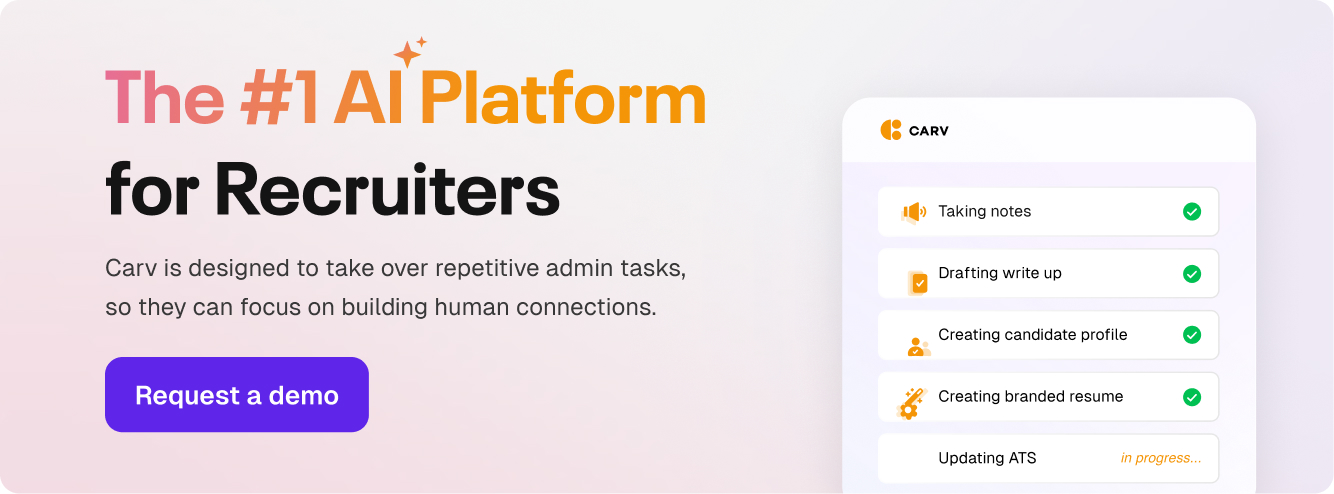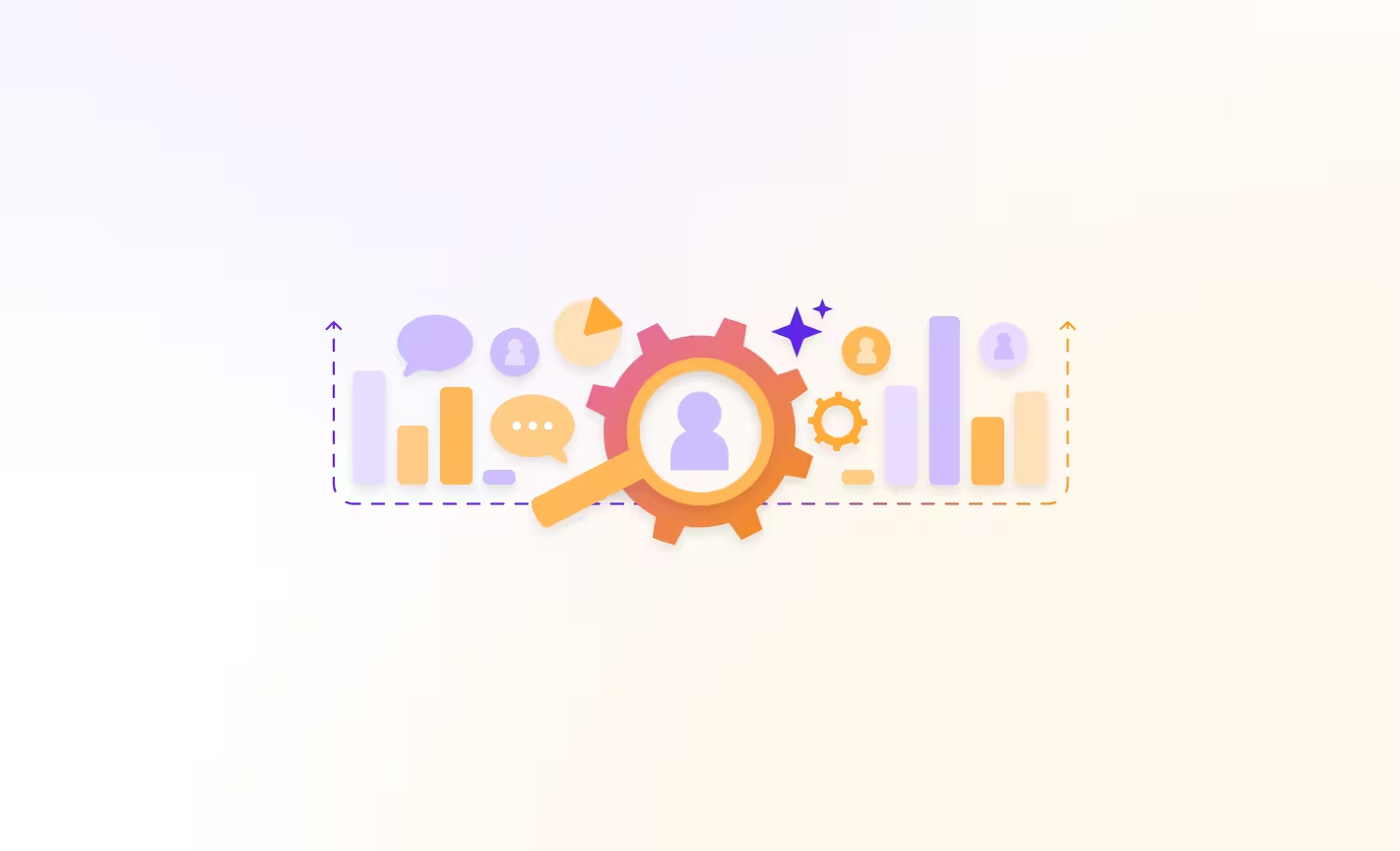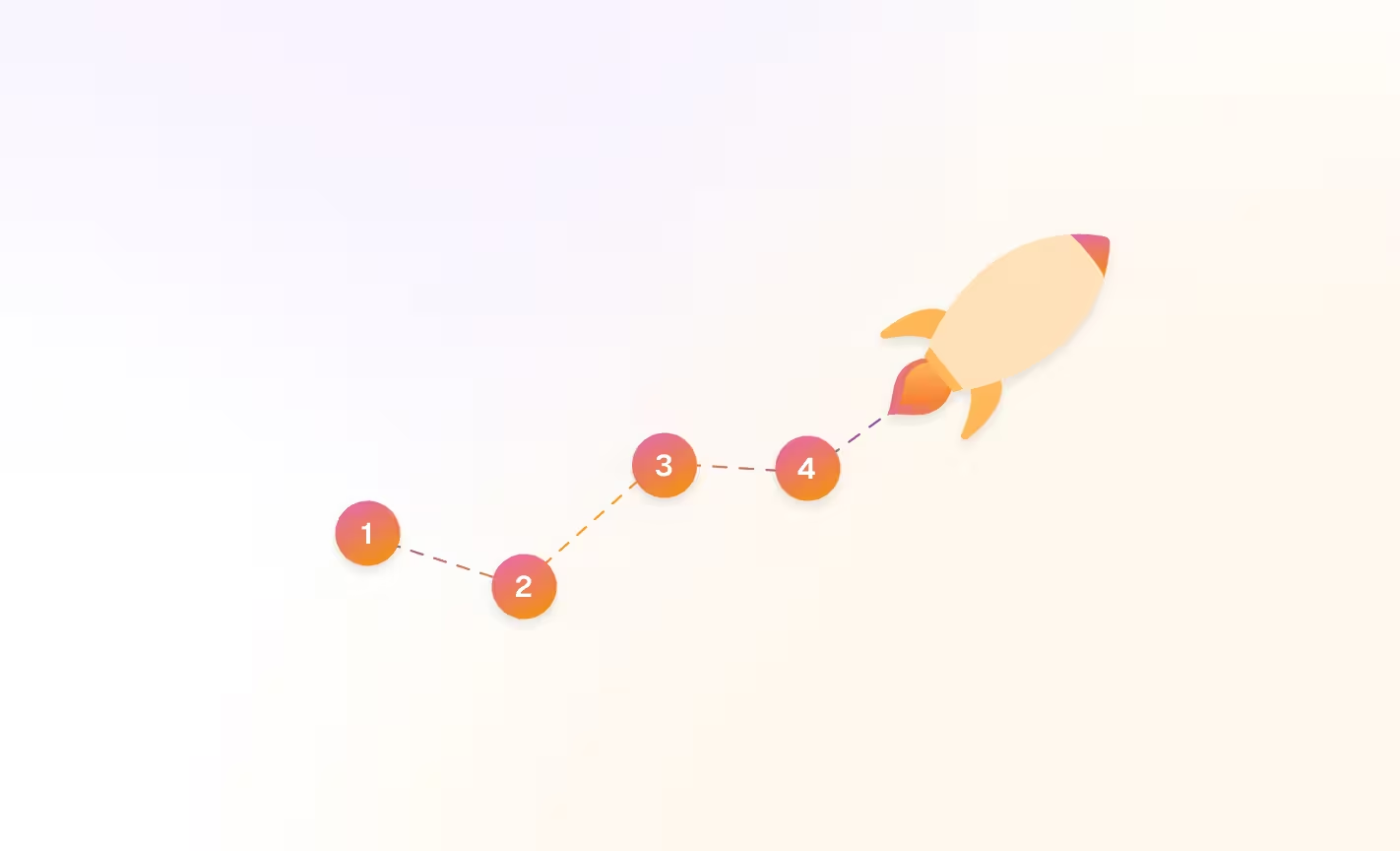Automation in recruitment isn’t new. The concept has been around for quite a while now, and there are plenty of tools out there that help recruiters work more efficiently.
However, most of the recruitment automation solutions on the market focus on progressing through process steps. Which is helpful, no doubt, but that’s not where most of a recruiter’s time is spent.
Recruiters - be them in-house or staffing agency professionals - spend almost 30% of their weekly time doing interview- and intake-related admin. And this is a challenge that legacy recruitment automation solutions can’t solve.
It’s also what makes AI-based recruitment automation so exciting for TA professionals: unlike regular recruitment technology, AI-driven recruitment platforms are able to automate the logic of the TA process, solving the recruitment effectiveness equation.
Let’s dive deeper into the topic to understand what makes AI automation different from regular automation, and how you can get started using such solutions in your recruitment process.
What is the role of AI-based automation in recruitment?
As said, regular recruitment tools focus on progressing through the hiring process. Some - like ATS and CRM platforms - move candidates from one column to the other when certain criteria is met; for example, when a candidate’s resume has been screened and the candidate’s status changes to “rejected” or “skills assessment sent”.
Artificial intelligence doesn’t stop at step progression. Unlike machine learning algorithms that can only execute a sequence of steps based on predefined rules, AI - or generative AI to be more precise - can work with unstructured data, mimicking human interactions.
What is unstructured data?

Any information that doesn’t come in predefined pairs of “data type” and “data value”. For example, in an applicant tracking system, you have a field called “Candidate name” - which is the data type, and a filed where you add the name of the job seeker. The name itself is the data value.
Unstructured data doesn’t follow such mapping rules, so to a machine and to regular hiring tools, unstructured data is not usable.
AI-powered tools can take unstructured input data such as the one from interview and intake calls, and automatically “read” it, understand it, and make decisions based on this data.
For example, AI recruitment software can join a recruiter during a candidate screening call, and once the call is done, AI can automatically parse and understand what the conversation was about, who said what, and so on.
The technologies behind AI hiring tools may vary. Some might use graph technology, others might use NLP - natural language processing technologies, but the common denominator is that gen AI recruitment platforms can understand unstructured data.
Moreover, they can make sense and structure this data into whatever form the recruiter or another hiring tool needs it. For example, if you use a tool like Carv to delegate interview- and intake-related admin, and you want the output from these calls to go directly to your ATS, AI can do that.
So AI can take an interview - be it in video format or phone call recording, and can structure the output in the way the ATS needs it.
By doing so, AI can automate the logic of the hiring process, along with the step progression.
This is an incredible breakthrough not just for recruitment, but for this field in particular, as no other technology before AI could behave in such a human way.
AI can make decisions in a human-like manner, by using data that legacy tools aren’t able to use without human intervention. And this is why, unlike predecessors, AI software can solve the recruitment effectiveness challenge once and for all.
Let’s look at some examples in the next section, to understand this better.
What exactly gets automated with AI
We’ve said that AI has the potential to automate the entire recruitment process, from end to end. But what exactly does this entail?
%2520(1).avif)
If we look at the typical talent acquisition process, the use of AI technology can help with both structured and unstructured data tasks, as follows:
- Structured data tasks
- AI takes over the logic of the process: For example, posting job openings, interpreting the results of skill assessments, or analyzing existing employee data and predicting candidate success based on similarities.
- AI takes over the step progression: For example, parsing resumes and interpreting the data, shortlisting job applicants or rejecting them based on job fit, or scheduling interviews and updating applicant tracking systems.
- Unstructured data tasks
- AI takes over the logic of the process: For example, assisting recruiters in interviews and intake calls, transcribing and summarizing these meetings, or creating job descriptions, candidate profiles, and motivation letters to hiring managers using the information from these calls.
- AI takes over the step progression: For example, following up with candidates after interviews or sending summaries and candidate presentations to managers after intake calls.
- Tasks that involve a mix of structured and unstructured data
- AI takes over the logic of the process: For example, searching through talent pools and sourcing candidates, or matching job seekers with vacancies using input from resumes, phone screening calls or video interviews.
- AI takes over the step progression: For example, updating ATS fields with applicant data from interviews, or assisting candidates with answers to frequent questions through real-time messaging and chatbot interfaces.
With this out of the way, let’s look at the “why” behind this - or what motivates recruiting teams to move towards AI-driven recruiting automation.
What factors are driving the automation of recruitment?
Of course, nobody chooses to implement AI automation for the sake of doing it. Replacing legacy systems with purpose-built artificial intelligence solutions needs to bring about enough benefits for hiring teams. So here are the main reasons for going the AI route.
Efficiency gains: Becoming zero-admin
Recruitment, even in its "modern" form, has become more of an administrative task. This isn't necessarily a recent development; Talent acquisition and HR teams have always grappled with manual, time-consuming tasks.
Until the advent of AI breakthroughs, these repetitive tasks were deemed inevitable, an inherent part of their operations that HR professionals simply had to contend with.
But in today’s reality, when all departments are looking at AI to drive efficiency, it’s no longer acceptable for hiring teams to waste time on tasks that can - and should - be fully taken over by machines.
So the first reason for incorporating AI into the recruitment process is automating the repetitive admin work:
- Resume screening,
- Scheduling interviews and phone calls to screen candidates,
- Candidate sourcing, searching through job boards and social media platforms like LinkedIn to find top talent,
- Initial outreach and candidate engagement through instant messaging,
- Workflows, such as moving candidates to the next stage in the process or sending interview invites and follow-up emails,
- Writing job requirements, opening requisitions, posting vacancies, or debriefing intake calls,
- Transcribing interviews and intake calls,
- Creating candidate profiles and writing motivation letters to hiring managers,
- Onboarding new hires.
Traditional automation such as RPA or machine learning algorithms can’t fully automate these procedures.
AI, however, thanks to its ability to handle unstructured data, can step in to streamline these processes from end to end.
.avif)
Enhanced candidate experience: Candidate-centric recruitment
The second driver of AI automation in recruitment is enhancing the candidate experience.
Although it may sound counterintuitive, artificial intelligence can actually optimize CX and make the recruitment process more human:
- Firstly, by taking over the administrative tasks mentioned earlier, AI liberates recruiters to focus on the right candidates. By dedicating all their attention and time to the best candidates and being fully present during interviews, recruiters can make better hiring decisions, ultimately increasing the quality of hire in the long run.
- Secondly, by engaging with qualified candidates in real-time and mimicking human behavior, AI ensures that all potential candidates have a positive experience, even if they are not shortlisted. This helps strengthen the employer brand by reducing candidate ghosting, a common occurrence with overworked recruiters.
- Simultaneously, AI automation ensures that quality candidates benefit from a more flexible process. Unlike human recruiters, AI can operate 24/7 and engage with candidates across various geographies and languages, making the process genuinely candidate-centric. AI enables a faster time-to-hire and can help eliminate unconscious bias from the process.
We covered the topic of candidate sourcing and candidate-centric recruitment in the podcast episode below.
Scaling recruitment efforts: Fuelling business expansion
Finally, the third major driver behind the AI-powered automation of recruitment is business expansion.
With AI taking over admin work, from sourcing and screening to matching and shortlisting candidates for vacancies, recruiters can dedicate more time to initiatives that move the needle for the business.
AI can scale with demand, handling a larger volume of applications and tasks without compromising on quality. It's a strategic move for companies looking to expand their workforce efficiently.
Simultaneously, for staffing agencies, artificial intelligence can identify new clients that could benefit from the candidate profiles available in talent pools. This enables agency recruiters to be more proactive, strategic, and data-driven when reaching out to potential clients.
In a nutshell, the shift to AI in recruitment isn't just a tech buzzword; it's a strategic choice driven by tangible benefits. From efficiency gains to fostering a better candidate experience and powering business growth, AI is revolutionizing the way we find, hire, and retain talent.
%2520(1).avif)
Prerequisites for automating the hiring process with AI
Before diving into the realm of automating the hiring process with AI, certain prerequisites need attention:
- Clear understanding of your recruitment process: Start by analyzing your current process and workflows. Map out the candidate journey and identify bottlenecks and repetitive tasks that can be automated. This will help you choose the right AI tools and tailor them to your specific needs.
- Defined goals for AI integration: What do you hope to achieve with AI? Improve efficiency? Reduce human bias? Attract better candidates? Move towards fully autonomous recruitment? Having clear goals helps you measure the success of your AI implementation.
- Standardized job descriptions and qualifications: Although AI can use both structured and unstructured data, to function effectively it’s best to feed it with examples of what you consider “good input”. For example, job descriptions or candidate profiles or motivation letters in the style and voice of your employer brand. Ensure your job descriptions are clear, consistent, and use relevant keywords. This allows AI to accurately assess candidates and create output data.
- Ecosystem and integration needs: Effective integration ensures that AI recruitment tools can smoothly collaborate with the established infrastructure. Most AI recruitment tools integrate with ATS and recruitment marketing software through APIs. Whether it's synchronizing candidate data, streamlining communication, or sharing insights, a well-integrated AI solution becomes an invaluable extension of the existing systems, enhancing overall functionality and maximizing the benefits of automation.
- Data privacy considerations: As companies embrace AI in recruitment, safeguarding candidate data becomes paramount. Establish transparent and robust data privacy measures to ensure responsible collection and utilization of candidate information.
All right. Now that you know how artificial intelligence can help automate recruitment and what the benefits are, there’s one last thing you need to consider: Your integration roadmap.
Where to start the AI automation of recruitment operations?
To keep this short, you have two options:
- Start with a ready-to-use solution that can seamlessly integrate with your existing tech stack and assist in tackling a major problem initially. For instance, Carv's AI collaborates with recruiters during interviews and intake calls, taking over all administrative tasks related to these interactions. The platform is free to use and compatible with any tech stack, as it complements existing tools without replacing them.
- Run a pilot program to mitigate risks and assess effectiveness without compromising on governance. Choose a specific problem to address and a team to test AI recruitment tools, allowing for a controlled exploration before deploying the solution across the entire company. This approach is particularly suitable for organizations with intricate recruitment infrastructure or processes, requiring a tailored enterprise solution.
In general, initiating with a small-scale approach and solving one problem at a time enables a more focused evaluation of AI's impact before broader integration.
Therefore, we encourage you to give Carv a try and witness firsthand what recruitment AI can achieve for your operations.



.avif)




